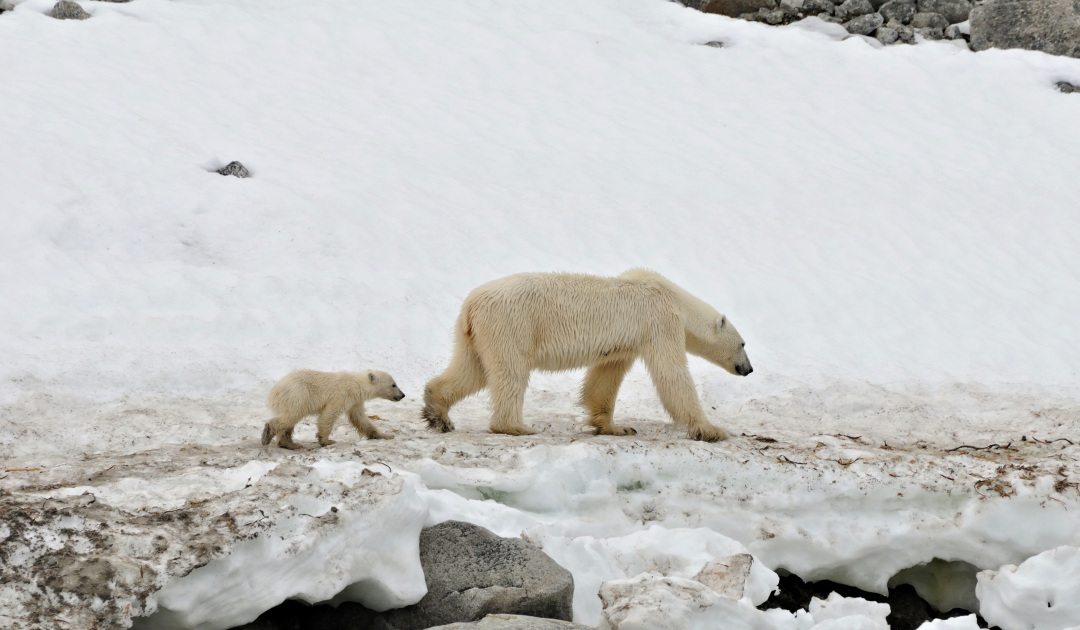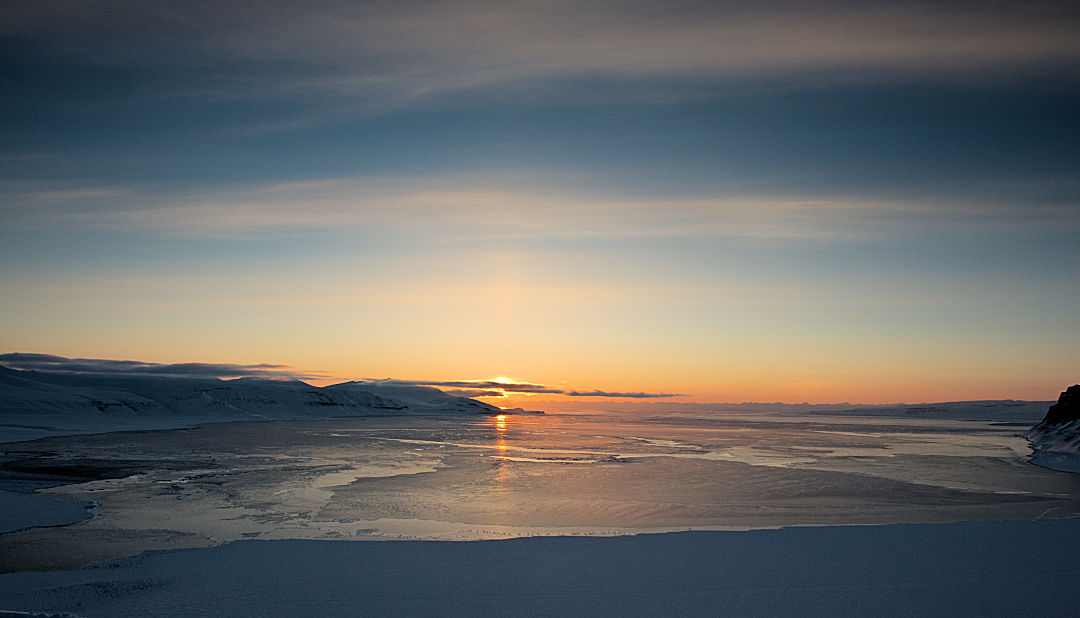
UPDATE The first results of the investigations by the authorities have shown that the drowned bear was indeed the animal that had broken into huts on Svalbard several times in recent months. The animal had been named “Frost” by photographer and filmmaker Asgeir Helgestad who had portrayed the bear and her cubs in his documentary film “Queen withou Land”. Speaking to local newspaper Svalbardposten, Helgestad stated “I am very saddened by this news after following her for ten years.” Why the bear drowned is not yet clear and still the subject of investigation. Further one investigates also a possible attack of the young animal on the people, who had fetched the carcass of the mother from the water and actually did not want to kill the young animal first. Also the backgrounds to the duration from the expulsion to the death are investigated, writes the newspaper further.
With the onset of spring, polar bear mothers on Svalbard come out of their dens where they spent the winter and the birth of their cubs, or move around with the older cubs. In search of food, the animals then migrate into the fjords and onto the pack ice, including on the west side of Svalbard. There an incident occurred with a sad outcome.
At the southern end of the well-known Tempelfjorden, near the small peninsula of Vindodden, a female polar bear and her cub died last Thursday night after being chased away from a cabin by residents. The authorities on Svalbard are currently investigating the case and do not assume any wrongdoing by the residents at this time, as they write in their press release.


According to authorities and the local newspaper Svalbardposten, the Sysselmester were notified last Thursday after midnight by a group of young people that there was a polar bear floating in the water off the Vindodden Peninsula that was not moving. Residents also reported that they had chased the bear, along with her cub, away from the cabin with signal pistols as the two animals had approached the residents and the cabin. The animals then immediately headed towards the water and swam away. Governor Lars Fause then had a team of authorities, including experts, fly to the hut. After managing to bring the bear ashore, they tried to scare the cub away, but to no avail. Therefore, it was decided to euthanize the young animal. The bodies of the animals are now being examined and witnesses to the case are being questioned. “We now have to collect and document all the information,” Lars Fause tells Svalbardposten. Authorities did not provide further information at this time on the condition of the animals, the age of the cub, or who was at the refuge.

It happens again and again on Svalbard that polar bears wander into the inhabited areas and break into huts. The animals are very curious and almost permanently in search of food. If polar bears get too close to the huts, residents are allowed to use signal guns to drive the animals away, which usually works well. In recent months, one bear in particular made headlines several times on Svalbard, having repeatedly approached the huts on the west side of Spitsbergen and broken into one or the other. It is not clear whether the dead bear is the same animal.
It is also a sad but necessary fact that young animals have to be euthanized/killed when the mother perishes. This is because if the animals are too young and inexperienced to fend for themselves, they are either at risk of an agonizing death from starvation or they may start foraging near human dwellings, posing a danger to both animals and humans.
At this time, authorities believe there is no wrongdoing on the part of the cabin’s occupants. Further details are to be communicated later.
Dr Michael Wenger, PolarJournal
More on the topic





